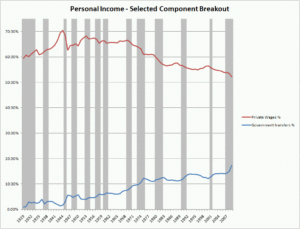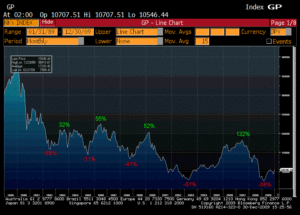Microsoft (MSFT) is as out of favor as out of favor can get. Apple adds “i” to the word “Cloud,” talks about it at a developer conference, and Steve Jobs is on the front page of the Financial Times. Microsoft releases the fastest selling operating system of all time (Windows 7) and then the fastest selling consumer device in history (the Kinect) and newspaper editors and investors alike just yawn. Microsoft can’t innovate, Steve Ballmer inherited a great company but hasn’t really done anything to move it forward, and he allocates capital poorly with dumb acquisitions (Skype) and silly R&D projects (Kin One and Kin Two).
Despite this, or perhaps because of it, we think Microsoft is a spectacular investment opportunity. We have owned Microsoft for several years, trading around the position multiple times. Today it is one of our largest positions. We articulated our thesis at length in a recent quarterly letter. In this brief post, we want to take a look at the claim that Mr. Ballmer has been a poor allocator of capital.
Last week, David Einhorn presented his investment thesis for Microsoft at the Ira Sohn Conference. He was bullish on the stock. He said it is very cheap on both an absolute basis and relative to the market and yet the business is outperforming the average S&P 500 company by a wide margin. Mr. Einhorn believes Microsoft is cheap for a reason. He argued that the number of poor capital allocation decisions on the part of Steve Ballmer has overwhelmed the superior operating performance and good decisions that have been made.
It seems clear that Steve Ballmer IS an “overhang” on the stock as Mr. Einhorn phrased it. The stock would likely appreciate if he was to move on. However, the question of whether Mr. Ballmer truly is a poor capital allocator seems less obvious to us. Remember, it isn’t his fault that the market irrationally bid the stock up to a PE of 70 right when he took over as CEO. So, you can’t judge him on stock performance alone. In addition, we think that the sheer size of Microsoft can cause confusion. Skype may or may not turn out to be a good acquisition. If it is a mistake, the $8.5B price would seem to make it a big one. But, it is only 4.5 months of free cash flow to Microsoft. What has Mr. Ballmer done with the rest of Microsoft’s cash?
From a base of $10.5B in 2000, Microsoft grew free cash flow (i.e. operating cash flow less capital expenses) to $22B in 2010. This is a CAGR (compound annual growth rate) of 7.7%. The total free cash flow generated over this ten year period was $155B. During that same period, Microsoft returned to shareholders $142B in cash via dividends and stock buybacks. In other words, Microsoft returned 92% of all the cash they generated to shareholders!
Let’s now use this information to perform a brief thought exercise. Today, you can purchase Microsoft stock for $24/share or you can buy the entire company for $203B. Imagine you were to buy the entire company today. Next, imagine that Microsoft were to grow free cash flow at the same rate for the next ten years that it did for the previous ten years. This means the firm would generate $360B in free cash flow over the next ten years. Given the firm’s historical need to retain very little capital, further imagine that 92% of all cash generated was returned to shareholders. Let’s assume it is all in the form of share buybacks so we don’t need to worry about taxes. At this point you would have received 1.6x your money back AND you would still own the entire business that is Microsoft: whatever it is that becomes of a cloud development platform (Azure), software as a service (Office 365 and Dynamic CRM), home entertainment (XBox, Kinect, XBox Live), etc., etc. Hmm… maybe Mr. Ballmer has presided over some innovation.
If those are the available investment dynamics, one could certainly do much worse. Perhaps that is exactly Mr. Einhorn’s point. If you buy Microsoft today, you likely get the above investment dynamics. You also get a free call option on Mr. Ballmer’s departure.
The information contained herein should not be construed as personalized investment advice. Past performance is no guarantee of future results. There is no guarantee that the views and opinions expressed in this blog will come to pass. Investing in the stock market involves the potential for gains and the risk of losses and may not be suitable for all investors. Information presented herein is subject to change without notice and should not be considered as a solicitation to buy or sell any security.
A complete list of recommendations by Grey Owl Capital Management, LLC may be obtained by contacting the adviser at 1-888-473-9695.


